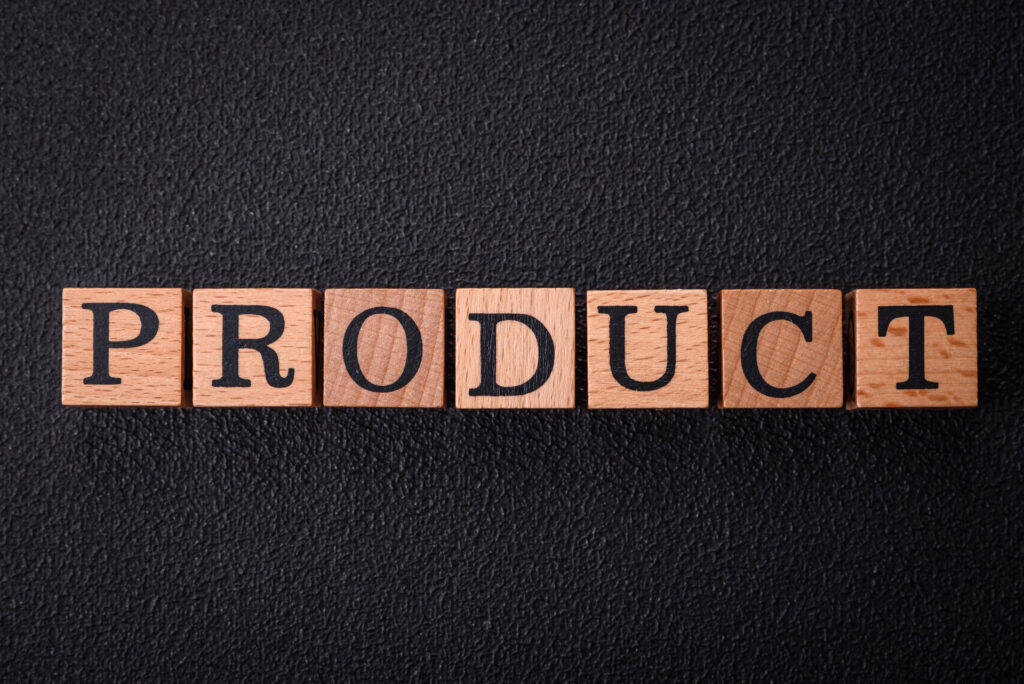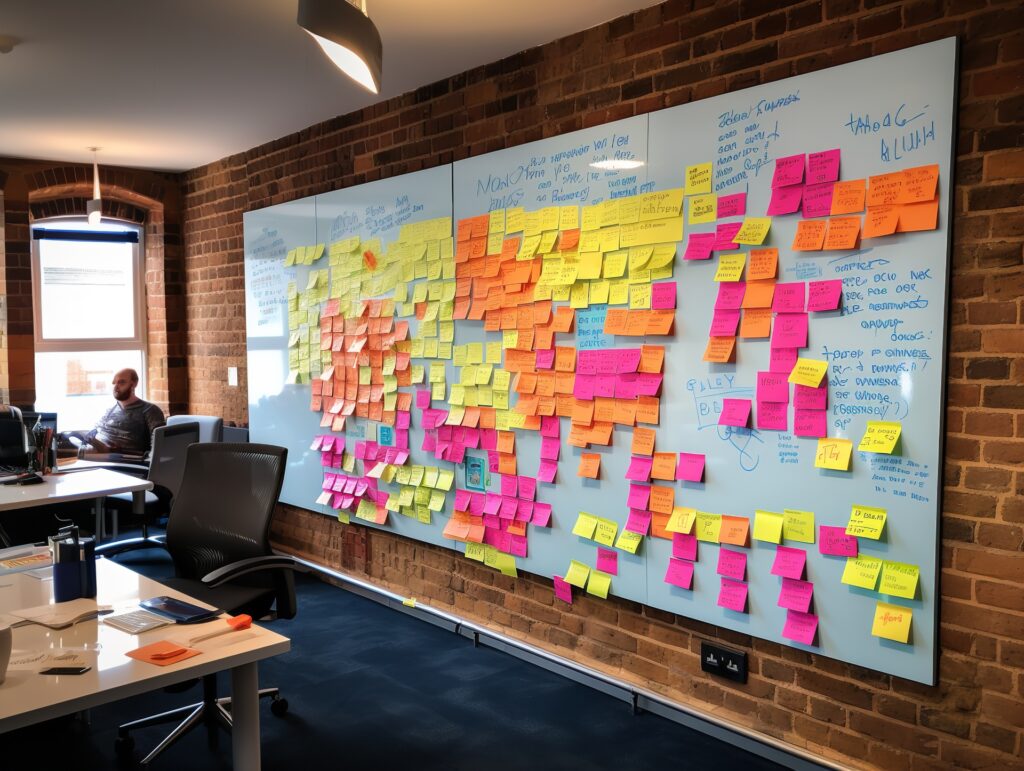Table of contents:
Every discovery phase requires members to rub their minds on the best way forward. So, it doesn’t matter whether it’s software, digital service, or physical product. To ensure sales, the production team must put in their best effort.
Consider how Netflix revolutionized its service through product discovery, transitioning from DVD rentals to streaming after observing changing user behaviors. This kind of insight comes from thorough discovery processes.
But the discovery phase is extensive, often needing different levels of interaction. That’s why it comes in many forms, each with a specific advantage. So, when considering product discovery frameworks, you may wonder which best suits you. Let’s understand what they are, why they’re important, and how to choose.
What is a Product Discovery Framework?
The discovery phase involves people analyzing how to best develop a project. It’s like having every construction team member read a building’s blueprint. But as building projects differ by complexity, so do production processes. That’s why stakeholders must decide on the best tactic for gathering the needed data.
Take Apple’s development of the first iPhone—the team spent months understanding not just what users wanted in a phone but how they interacted with technology in their daily lives. This comprehensive approach to discovery led to a revolutionary product that redefined mobile devices.
Therefore, they must select appropriate product discovery frameworks to map out their objectives. This term refers to the structure and process a team uses to compile data. It involves combining the most efficient technique relevant to the project. It’s essential because the right framework could be the difference between a success and a flop.
If project discovery is like food seasoning, then the framework is its container. Just as a chef carefully selects spice containers based on freshness needs and usage frequency, product teams must choose frameworks that preserve and optimize their discovery process. By considering the type of seasoning, you decide the container’s material and size. You also factor in how the material influences its dispensing, storage, and shelf life. So, if you pick the wrong container, you lose the content’s viability and usability in the long run.
Why Are Product Discovery Frameworks Important?
Picking the ideal product discovery framework is as important as the discovery phase. It’s the frame that houses the picture, ensuring every feature doesn’t fall off. By operating within the project’s needs, discovery teams experience these benefits:
- More Relevant Data: Since each team’s project discovery phase is unique, the framework serves as a guide. Data-sourcing efforts scrutinize relevant areas to ensure the retrieval of accurate information. An example was when Spotify developed its Discover Weekly feature; they used a structured framework to analyze over 2 billion user-created playlists. Their focused approach enabled them to uncover patterns that a less structured analysis would have overlooked.
- Targeted Discovery Operations: Each product discovery framework suits different environments. Therefore, team members can concentrate without becoming distracted by superfluous tasks.
- Cost and Time Optimization: With your team focused on the right targets, you spend less time researching. This further reflects on your digital product discovery budget and resources.
- Efficient Task Allocation: Team members work better and faster as they focus on the right channels. This leads to better productivity and more accuracy in product discovery deductions.
Product Discovery Frameworks to Consider
Every project discovery phase requires complete focus to generate the best results. This is why it’s crucial to select the most appropriate framework for your specific needs. There are various techniques available, but these are the most commonly used:
Dual-Track Agile
This framework combines the product discovery and delivery phases for a double-advantage operation. You get a steady grasp of user needs and deliver essential product features at the same time. The team leverages user feedback to make the requested adjustments in a short time.
The dual-track agile framework is ideal for situations with rapid market changes. This is why it works best for tech brands and startups, as they operate in dynamic environments. A two-parallel workstream aligns the process of discovery and feature delivery. This lets the team run constant updates with research and user feedback.
Zoom used this framework during the pandemic to rapidly develop new features while maintaining existing ones. They simultaneously discovered new user needs (like virtual backgrounds) while delivering core functionality improvements.
Lean Startup
Dropbox’s famous MVP was simply a video demonstrating how the product would work. This lean approach helped them validate their concept before building the actual product, saving millions in development costs.
This product discovery framework focuses on consistent tests and adaptations via user feedback. The technique rests on customer insights to create the ultimate product. An MVP showcases proposed features to potential users who interact and drop reviews. The team analyzes the feedback to tailor features that boost the product’s chance of success.
The lean startup technique is best for project discovery processes involving high-risk ideas. It’s also beneficial for teams with limited resources, as it can reduce costs and accelerate time to market. The team can also use the feedback to provide extra and innovative features.
Jobs to Be Done
This may be one of the most common product discovery frameworks. The team analyzes how customers interact with a product to understand their motivations. This split into “jobs” and studied to develop appealing features that users will need. The JTBD framework is one of the most user-centric discovery tactics available.
Its product discovery techniques are common among industries where user needs are complex. It’s also perfect for teams looking to understand customer behavior toward products. Its process involves identifying the “jobs,” categorizing them, and offering innovative solutions.
When Intuit developed QuickBooks, they discovered that small business owners didn’t want to “do accounting”—they wanted to “stay on top of their finances.” This insight fundamentally shaped the product’s development.
Design Sprint
Jake Knapp’s team at Google used this framework to develop Google Meet’s original interface in just five days. The rapid prototype testing revealed crucial insights about user preferences for video conferencing.
This is one of the fastest product discovery frameworks available. It stirs urgency and rapid thinking in teams through a five-day problem-solving window. Each day targets a specific operation, such as:
- Problem Breakdown: The problem breakdown occurs on the first day of the project discovery process. The team agrees on a target and goal and implores all members to mandate this target.
- Solution Drafts: During the second day of the project, members of the discovery team exchange their ideas. Each sketches theirs as a separate solution to the targeted challenge.
- Draft Reviews: By Day 3, the team evaluates all the drafted solutions. Members discuss their edges and loopholes and decide on the most effective option.
- Prototyping: Product discovery Day 4 involves creating a prototype. It must carry the core features expressed by the solution’s concept.
- Testing: Users test the prototype on Day 5 for interaction. The project discovery team collates their feedback to decide the next outcome.
The Design Sprint is ideal for businesses seeking quick solutions from fewer resources. These product discovery frameworks are also perfect for confirming uncertain ideas among users.
Opportunity Solution Tree
This is one of the best product discovery techniques for multiple-solution problems. The team creates a visual draft starting with the customer’s core problems. The team then links various solutions and explores potential opportunities based on each need. It’s a beneficial option for teams that hope to provide steady improvements to evolving user pain points.
The Opportunity Solution Tree asks user-centric product discovery questions. The team establishes a specific aim and then connects potential pain points to it. Then, they link each pain point to possible solutions below. They test the structure using different criteria and adjust for better results.
LinkedIn used this framework to develop their Skills Assessment feature, mapping out various ways to help job seekers demonstrate their capabilities to potential employers.
Double Diamond
IBM’s design team used this framework to reimagine their enterprise software interfaces, resulting in a more user-friendly experience that increased customer satisfaction scores.
This is one of the most structured techniques for project discovery. It features two diamonds, one for discovery and the other for delivery. The first segment divides into Discover, which identifies the market, and Define, which pinpoints the problem. The second division involves developing solutions and testing them with users.
The Double Diamond framework focuses on thorough evaluation before presenting solutions. It helps digital product discovery teams confirm users’ clear needs before development. This leads to a product that offers the closest solution to the market’s pain points.
How to Choose the Right Product Discovery Framework
With so many helpful solutions available, how can you decide which framework fits your discovery process? Start by identifying your industry, as this affects your research time and urgency. Tech businesses focus on fluidity and speed, while retail discovery teams consider thoroughness. So, match the product discovery framework with your industry’s core factors.
Consider your user’s need for complexity. Some product discovery questions are clear and concise, while others dig deeper. You’ll also need to explore your product’s functionality. This determines how complex the development process will be, plus user interaction.
Consider these real-world examples:
- A fintech startup might choose Design Sprint to quickly validate new payment features.
- An established e-commerce platform might use Double Diamond for a thorough redesign.
- A B2B SaaS company might prefer Opportunity Solution Tree to map complex enterprise needs.
Finally, measure your budget. Limited-resourced teams can consider product discovery frameworks with quick results. With these tips in mind, you can always choose the right technique for your processes.
How We Can Help
At North South Tech, we transform product discovery from a complex maze into a strategic advantage. Our team has mastered the art of aligning frameworks with business realities, catering to both startups and enterprises seeking deep market insights.
We’ve helped companies like yours navigate the discovery phase using frameworks that range from rapid Design Sprints to comprehensive Double Diamond approaches. Rather than advocating for a universal solution, we collaborate with your team to pinpoint and execute a framework that perfectly suits your industry’s unique dynamics, financial limitations, and user complexity.
Connect with North South Tech today to turn your product vision into market reality—because the right framework isn’t just about process; it’s about possibility.







